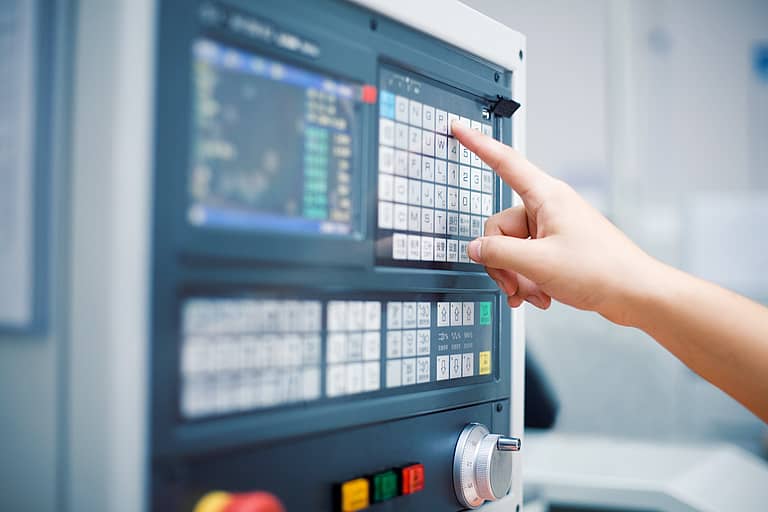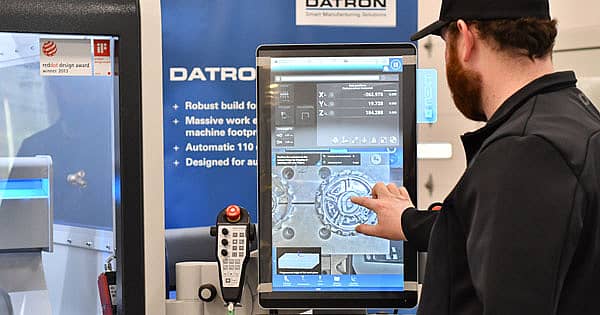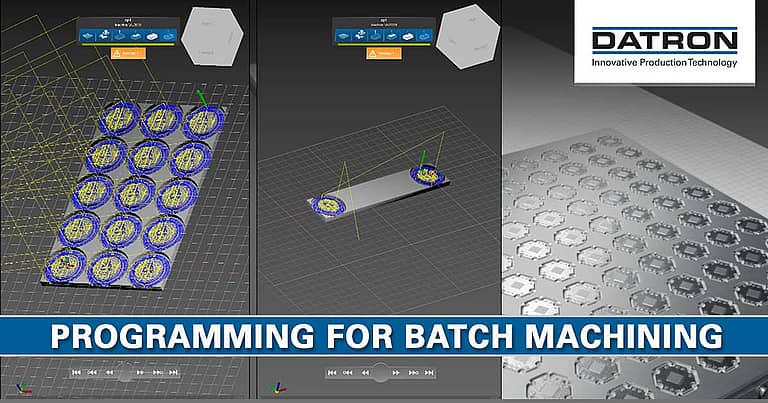
CNC machine programming offers a systematic approach to controlling automated equipment with precision and efficiency. It involves converting design concepts into a language that computer-controlled machinery, such as mills, lathes, or routers, understands. Using programming languages like G-code, specific instructions regarding tool paths, speeds, and operations are communicated to the CNC machine. This process enables the production of intricate components with consistent accuracy, streamlining manufacturing workflows and reducing human error.
CNC machine programming bridges design intent and tangible production, shaping contemporary industrial production. In this article, we will explain more about what CNC programming is, the software involved, its importance, and more.
Explaining CNC Machine Programming
CNC programming starts with a design concept or blueprint created using computer-aided design (CAD) software. This design serves as the foundation for the part to be manufactured. CNC programmers then analyze the design and determine the most efficient approach to machining it. They must consider material type, tooling availability, and machining capabilities.
Once the machining strategy is established, the CNC programmer translates the design specifications into commands understandable by the CNC machine. This involves writing or generating the appropriate G-code and M-code sequences that dictate the machine’s movements and operations. For instance, G-codes control motions such as cutting paths, while M-codes handle auxiliary functions like coolant activation or tool changes.
CNC programming requires a deep understanding of machining principles, materials, tooling, programming languages, and software tools. Programmers must anticipate potential challenges and optimize the machining process to achieve the desired outcomes. Additionally, they often refine and debug programs to enhance efficiency, minimize machining time, and reduce scrap.
The versatility of CNC programming extends beyond traditional milling and turning operations to encompass a wide range of machining tasks. These tasks include drilling, tapping, boring, and contouring. Advancements in CNC technology, such as multi-axis machining and high-speed machining, expand possibilities for complex part geometries and improve production efficiency.
What is CNC Programming Software?
Understanding what CNC programming is requires knowledge of the software used. CNC programming software is crucial in modern manufacturing, creating, editing, simulating, and optimizing programs that control CNC machines. These software packages provide a user-friendly interface for programmers to translate design specifications into machine-readable code. CNC programming software varies from standalone applications to integrated suites within larger computer-aided manufacturing (CAM) or CAD software platforms.
One primary function of CNC programming software is to facilitate the creation of CNC programs from design data. Programmers can import CAD models or drawings directly into the software, where they define toolpaths, machining operations, and cutting parameters. The software then generates the corresponding G-code, which serves as instructions for the CNC machine. Additionally, CNC programming software often includes libraries of predefined toolpaths and machining strategies. These strategies streamline the programming process and ensure consistency across projects.
Simulation and Verification
Simulation and verification are critical aspects of any CNC software. Before executing a CNC program on the machine, programmers use the software to simulate the machining process virtually. This simulation allows them to visualize toolpaths, identify potential collisions or errors, and optimize machining parameters. By validating programs in a virtual environment, programmers can minimize the risk of costly mistakes and optimize production workflows.
Post-Processing
Many software packages offer features for post-processing and optimization. The post-processor translates CAM toolpaths into G-code or unique code specific to a CNC machine. Post-processors are not restricted to a specific language, as different manufacturers and CAM providers use various languages to write them. The post-processor is critical in CNC machining, providing the CNC machine with accurate instructions to produce a part.
Integrated Software
Besides standalone software, many CAM and CAD software platforms, such as Autodesk Fusion 360, incorporate built-in capabilities. These integrated solutions offer seamless interoperability between design, programming, and machining processes. These processes allow users to streamline workflows and eliminate data translation errors. Integrated software packages may also include advanced features such as automatic feature recognition, toolpath optimization algorithms, and real-time machining simulation, enhancing productivity and reducing programming time.
The Importance of CNC Programming
The importance of CNC programming in modern manufacturing cannot be overstated, as it forms the foundation for the precise and efficient fabrication of complex components across various industries. By providing a systematic approach to controlling CNC machines, programming ensures that each part is manufactured according to exact specifications, minimizing variability and errors.
Process Automation
One key benefit of is the ability to automate and streamline the manufacturing process. Unlike traditional manual machining methods, which rely heavily on operator skill and experience, CNC programming allows for creating highly optimized machining sequences executed with minimal human intervention. This automation increases productivity and throughput, reduces the risk of errors and rework, and leads to lower production costs and faster time-to-market for finished products.
Pushing Machining Boundaries
CNC programming enables manufacturers to tackle increasingly complex part geometries and materials that would be impractical or impossible to machine manually. With the ability to control multiple axes of motion simultaneously, CNC machines can perform intricate machining operations with micron-level precision. This capability opens up new possibilities for innovative designs and engineering solutions. Whether producing aerospace components, medical implants, or automotive parts, CNC programming empowers manufacturers to push the boundaries of what is achievable with traditional machining methods.
Optimization
Besides its role in production, CNC programming plays a crucial role in quality control and process optimization. By programming CNC machines to perform in-process measurements, monitor tool wear, and adjust machining parameters dynamically, manufacturers can ensure that each part meets the highest standards of quality and accuracy. Additionally, CNC programming software enables programmers to simulate and optimize machining processes virtually, allowing them to identify potential issues and inefficiencies before they arise on the shop floor.
By leveraging computer-controlled machinery and sophisticated programming techniques, manufacturers can stay competitive in an increasingly demanding global market. They deliver high-quality products that meet customer needs while driving innovation and progress in the industry.
G-Code in CNC Programming
G-code, short for “Geometric Code” or “G Programming Language,” serves as the backbone of CNC programming, providing a standardized set of instructions to control CNC machines’ movements and operations. These commands are alphanumeric codes, typically preceded by the letter “G,” which specify actions such as tool movements, cutting paths, spindle speeds, and tool changes. These commands are written in sequential order within a CNC program to guide the machine through the machining process.
G-code enables manufacturers to produce complex parts with accuracy and consistency by providing precise control over CNC machines. DATRON CNC machines are well-known for their user-friendly interfaces and advanced features that streamline the machining process, making them accessible to operators without extensive knowledge of G-code programming. One key way DATRON machines eliminate the need for G-coding is through intuitive and innovative next Control software. Keep reading to learn how this software is a game changer in the CNC programming field.
The Three Types of CNC Machine Programming
Three primary methodologies dominate CNC programming: manual programming, CAM programming, and conversational programming. Each offers distinct advantages and caters to different skill sets and production requirements.
Manual Programming
Manual programming involves CNC machine operators or programmers manually writing G-code instructions using a text editor or dedicated programming terminal. This method requires a deep understanding of CNC machine operation, G-code syntax, and machining principles. Operators enter commands line by line, specifying toolpaths, speeds, feeds, and other parameters directly into the program. While manual programming offers maximum control and flexibility, it can be time-consuming and prone to errors, particularly for complex parts or operations.
Computer-Aided Manufacturing (CAM) Programming
CAM programming uses specialized software packages to automate generating CNC programs from CAD models or design specifications. Using a graphical interface, CAM software enables users to define machining operations, toolpaths, cutting parameters, and other machining parameters. The software then generates the corresponding G-code automatically based on the input parameters and machining strategies defined by the user. CAM streamlines the programming process, reduces programming time, and minimizes errors by providing advanced features such as simulation, optimization, and post-processing capabilities.
Conversational Programming
Conversational programming offers a user-friendly approach to CNC programming that allows operators to create CNC programs directly at the machine control panel without external software or manual G-code programming. In conversational programming, operators are guided through prompts and menus to define toolpaths, machining operations, cutting parameters, and other settings using plain language or graphical representations. The machine control unit then generates the corresponding G-code based on the operator’s input. Conversational programming suits quick prototyping, small-batch production, or simple machining tasks because it requires minimal programming knowledge and allows direct performance on the shop floor.
Keep reading to see how DATRON leverages conversational programming to simplify CNC machining processes and make them more accessible to a wide range of users.
See how DATRON next Control Changes the CNC Industry
DATRON’s next Control Software System
DATRON’s next Control software offers an intuitive touch-screen interface at the machine control panel, allowing operators to interact with the CNC machine using simple language and graphic icons. This approach eliminates the need for manual G-code programming or external CAM software, making CNC machine programming more user-friendly and efficient.
With the next Control software, operators are guided through prompts and menus to define toolpaths, machining operations, cutting parameters, and other settings. The interface presents options clearly, enabling users to input their requirements quickly and easily. This feature also includes built-in intelligence and automation to assist users in generating CNC programs by automatically handling tasks such as toolpath generation, tool selection, and feed rate adjustments.
Another benefit of DATRON’s next Control software is its real-time visualization and simulation capabilities. Operators can confirm and preview machining operations before execution. By providing an intuitive interface, built-in intelligence, and real-time visualization, next Control simplifies CNC programming, reduces programming time, and empowers operators to achieve high-quality results confidently.
Now that you know what CNC programming is, its importance, the three types of programming, and the software used, it’s time to contact DATRON Dynamics. Our team will help you discover a new way to enhance your workflow and provide solutions for your needs. Let’s solve your production challenges and streamline your machining processes together!







